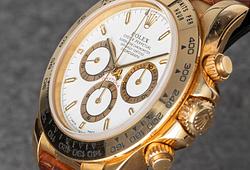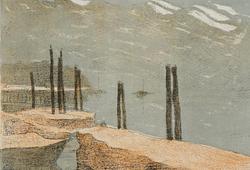Christian Berg
"Blomform I"
Signed C.B and EX. 2. Conceived in 1929–1930.
Polished bronze, height 31.3 cm, mounted on a black stone base height 10.5 cm.
Tuontiarvonlisävero
Tuontiarvonlisävero (12%) tullaan veloittamaan tämän esineen vasarahinnasta. Lisätietoja saat soittamalla Ruotsin asiakaspalvelumme numeroon +46 8-614 08 00.
Kirjallisuus
Sven Sandström, "Christian Berg - Livslinjer och formtankar", 1962, the motif listed as cat. no. 23.
Torvald Berg, "Christian: min upplevelse av skulptören Christian Berg: en illustrerad berättelse om far, hans liv och arbete", 1991, no. 45, listed p. 188, illustrated p. 189.
Muut tiedot
Christian Berg began his artistic career in a naturalistic style, a style that would change when he came into contact with the group "Halmstadgruppen" around 1925 and became interested in post-cubism. Despite his predilection for painting, however, it was in sculpture that he achieved his greatest success. His sculptures are characterised by engineering precision and, based on Cubism, he was later inspired by ancient Egyptian and Greek sculptures, which he gave architectural form with elements from nature. In 1925 Berg went to Paris, where he studied for a short period with André Lhote. Berg describes his studies as ‘not very meaningful’, even though his interest in Cubism increased. In Paris he came into contact with Waldemar Lorentzon, Erik Olson, Otto G Carlsund and Gösta Adrian-Nilsson, who studied under Fernand Léger at the Academie Moderne. Berg also came into contact with Légér's school, as he was a student there for a few weeks.
In 1928, Christian Berg made his debut with an exhibition at Galérie Mots et Images in Paris together with the other Swedes who studied under Léger. A few months later he exhibited again, this time at Galérie Aubier in Paris. The criticism was positive, which encouraged the exhibitors to try to exhibit to their home audience in Sweden. The first exhibition was organised by Göteborgs Konstförening in October to November 1928.
Berg's ‘Blomform I" is reminiscent of the organic, budding forms of contemporary sculptors such as Jean Arp, but has a more Brancusi-like pride and a soft cubist structure. The flower, the bud, and the pistil were suitable as form inspiration for organic sculpture because they expressed a primitive and erotic drive that the Freudian-inspired surrealists, with their allusion to life and sexuality (reproduction), used to depict nature.
In his monograph on Christian Berg, art historian Sven Sandström writes in detail about ‘Blomform I’:
‘[...] Blomform, which was created [...] around 1929, was also cast in black patinated and polished bronze. Especially in its earlier version and in plaster, this sculpture also seems to have been cut from a simple closed volume, perhaps more like an almond shape. But the natural motif that now gave the impulse was not a fruit, but a flower of Philodendron [...] According to the accompanying article, the flower actually consists of the pistillate stem - yes, the stem is made up of many flowers, while what we perceive as the calyx is actually an ordinary leaf formed for protection. Its enveloping function is more important than the flower's usual function of attracting and adorning.
It is thus with a new mother form that the sculptor deals, and this is reflected in the work. The vegetative rhythm of the forms is unmistakable. In particular, the larger leaf, the floral seal, gathers under it the smaller guard leaf and the heart leaf. It has the character of a fleshy plant. The volumes are still, the shield is completely passive, and the heart-leaf is not hidden in inaccessibility: there is no hiding quality here, only two protective forms. But the centre of the flower seeks out one's protection, it too must reach its fulfilment.
More than ever, a single enveloping rhythm depicts the western meaning of the sculpture [...] There is also a second version of this ‘Blomform', but it differs from the earlier one only in the slightly greater openness of its form. It was executed at the beginning of the 1940s, probably in 1942’ (Sven Sandström, “Christian Berg - Livslinjer och formtankar”, 1962, pp. 59-60).










































